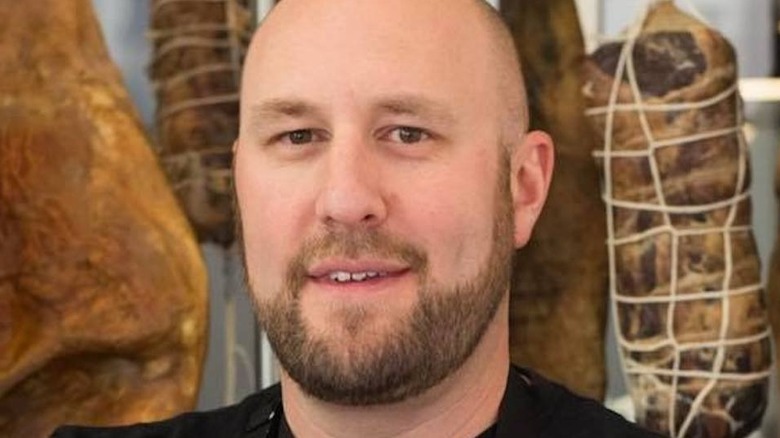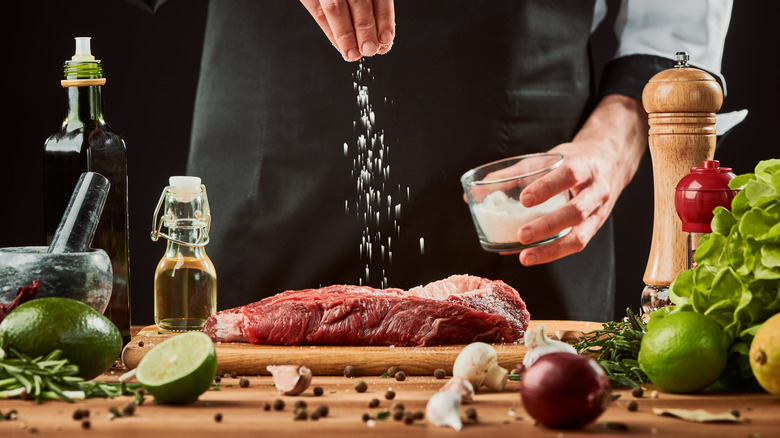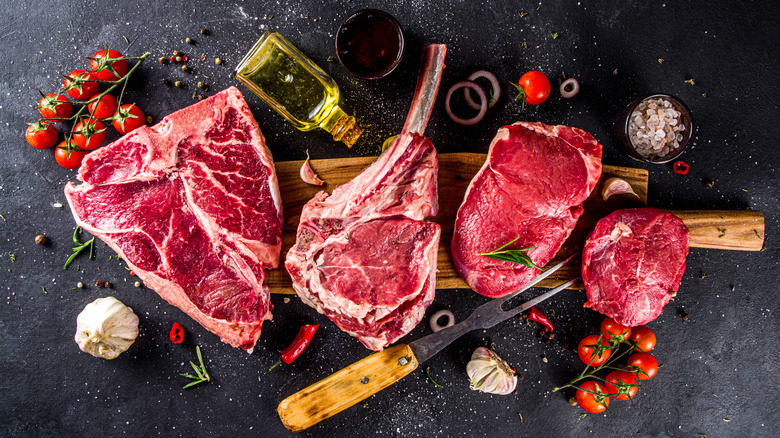How To Cook The Best Steak, According To Hosea Rosenberg - Exclusive
There aren't many meals that can hit the spot the way a good steak dinner can. Especially when you can get it without leaving the house (or let's be honest, changing out of your sweatpants). But it takes some know-how and a little practice to master the art and science of a proper steak. So we went straight to an expert on all things beef, "Top Chef" champion, restaurateur, and butcher shop owner Hosea Rosenberg.
Rosenberg — who was crowned the winner of "Top Chef" Season 5 — has been invested in local, sustainable, and whole animal butchery and cooking for years. And if there's one thing he knows like the back of his chef's knife, it's how to make a great steak. In an exclusive interview with Mashed, Rosenberg revealed the mistakes he sees home cooks make with their beef, and shared his simple steps to cooking the best steak, every time.
Cooking great steak starts before the meat hits the heat
When it comes to making steak, every step matters. For starters, chef Hosea Rosenberg said you should always take your meat out of the fridge well before you're ready to cook it. "Let the meat get to room temperature before you cook it," Rosenberg recommended, adding that "it will cook better if it's not ice cold."
Next, Rosenberg said, "season well but don't over-season." Of course, there's a fine line between well-seasoned and oversalted when it comes to steak, but Rosenberg says to err on the side of caution. "There's two things you can always do more of. You can always add more salt and you can always add more heat. You can never take those things away. So if you overcook or you over-salt, you're done," he warned.
Hosea Rosenberg advised a hands-off approach to get it cooked to perfection. "Be patient. Let the grill cook the meat, don't keep moving it around," he suggested. "Cook one side and then cook the other side, you're done." This helps you avoid overcooking your steak as well.
Speaking of, that hands-off rule also applies once your steak comes off the heat. Rosenberg said, "a big thing for steaks, in particular, is you've got to let it rest after it's cooked," adding that "it'll stay more juicy and more tender." Don't worry about the steak cooling down while it rests, because that's actually how a proper chef would plate it anyways. Rosenberg said, "the general rule of thumb is however many minutes [the steak] was on the grill, that number divided in half is how long it should rest."
For a steak night treat, Hosea Rosenberg says go for the lesser known cuts
While Rosenberg's tips for great steak can apply whichever cut you're craving, he would be the first one to encourage you to get outside your comfort zone. As a whole animal butcher, he's pretty familiar with all parts of the cow, and says consumers may be missing out.
And trying something different can not only be delicious but more sustainable and more affordable. "A lot of those lesser known cuts are like the bulk of the animal," Rosenberg explained. So if more people are interested in eating them, then less of the animal potentially goes to waste. Furthermore, Rosenberg said most of the lesser-known cuts "have just as much flavor at a much lower price point."
Some of Rosenberg's favorites include the bavette, which is a type of flank steak. "It's sort of off the shoulder," he said. "It's really tender, it's got no gristle or fat cap on it, it's just really good marbled meat and it's really inexpensive." Rosenberg also mentioned, "the Denver cut is another really, really great one." When in doubt, Rosenberg said, "If you have a butcher that you trust, go to the butcher and say, 'Hey, is there something less expensive that will still be really marbled and really delicious?'"
To try out one of Hosea Rosenberg's recipes for yourself, check out his collaboration with Teton Waters Ranch.


